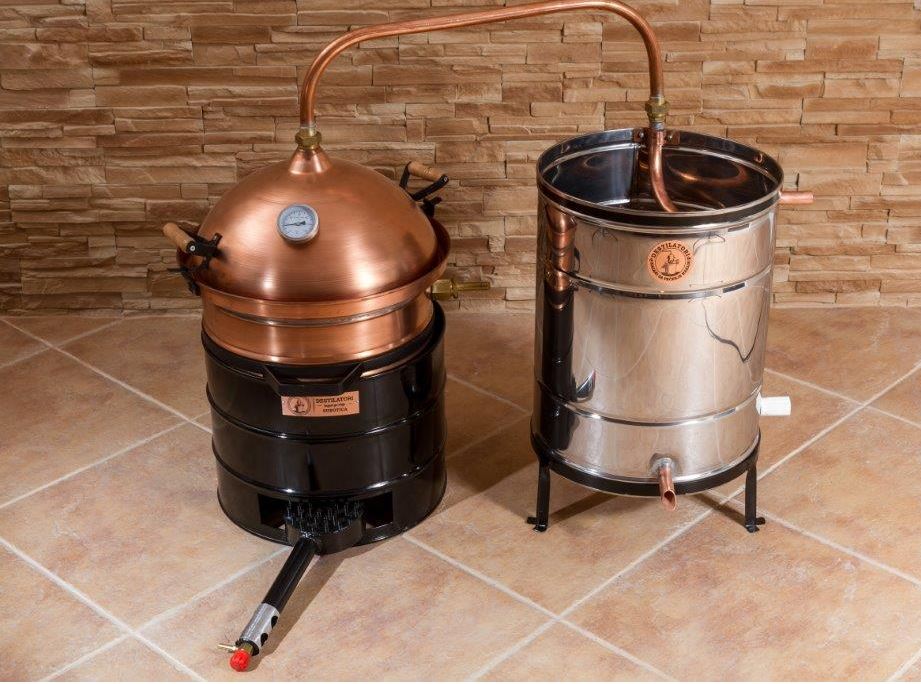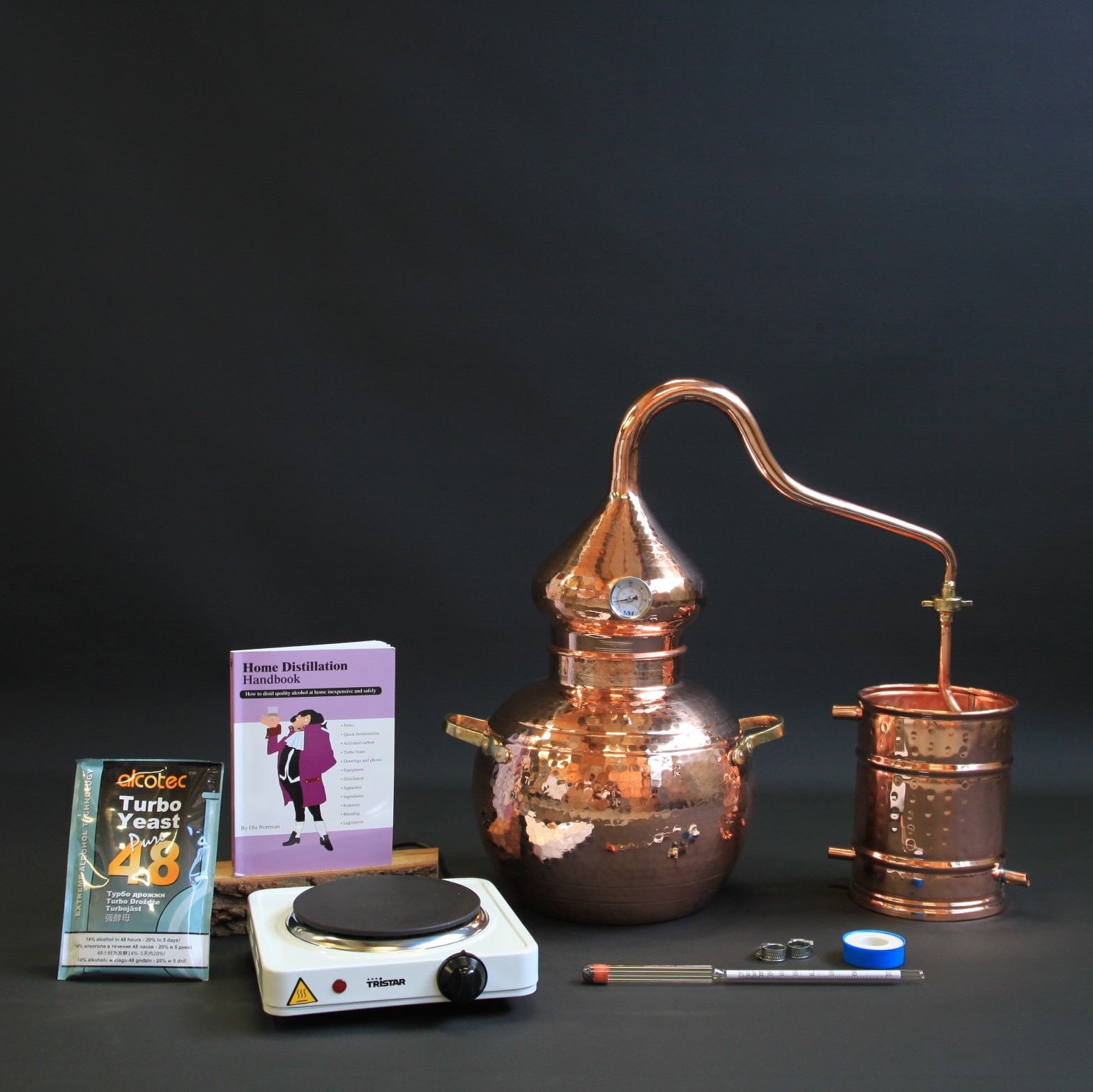Distilling wine
There can be several reasons for distilling your wine. Perhaps you have made wine yourself and the wine is not as tasty as you expected. Or you still have a number of old bottles of wine that are well out of date. In that case you can heat up the wine with a still and turn the wine into a delicious drink. But you can also distil good wines into a tasty drink. You can also experiment by adding extra grapes or other fruits to your wine before starting the distillation process. If you are going to distil wine, it is important to separate the pre-run from the distillation, the middle and trail. You can read exactly how this works here. All of our copper pot stills are suitable for distilling wine.
Making cognac is double distilling white wine
A commonly used still is the Charentais alembic still. This still is the only type of still allowed in the Cognac area to make real French Cognac. Cognac is a brandy, made from white wines. That wine must consist of at least 90% uni blanc, colombard and folle blanche grapes. Cognac is made by distilling white wine twice, resulting in an alcohol percentage of at least 40%. After the first distillation, the distillate is again poured into the still and heated and distilled again. This process is called double distillation. After distillation, cognac must mature for at least 2.5 years in oak barrels. This oak provides the characteristic vanilla flavour and tannins in the drink. Officially, a drink can only be called cognac if it meets the following conditions:
– Double distillation of white wine.
– White wine must consist of 90% uni blanc, colombard and folle blanche grapes.
– The drink must be distilled with a Charentais alembic still.
– The drink must come from the region of Cognac.
– The alcohol percentage must be at least 40%.
– The drink must have been aged in wooden barrels for at least two and a half years.

Charentais alembic still for making cognac




















